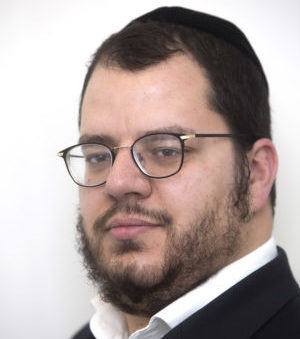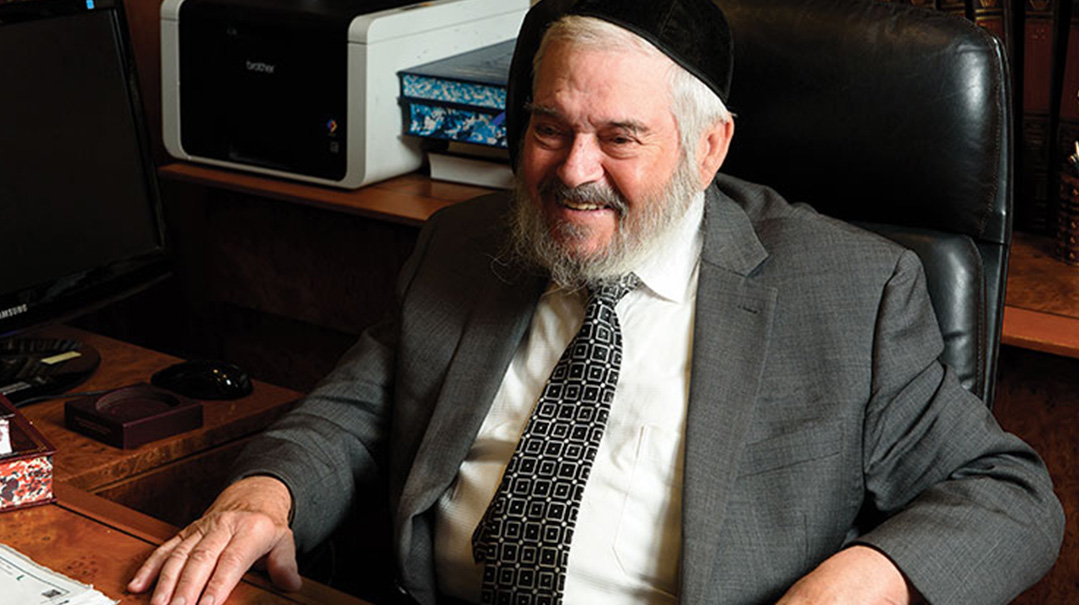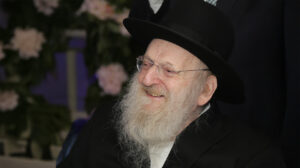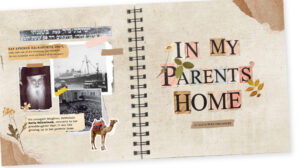Always a Pressburger


JUST KEEP GIVING Rabbi Cohn 88 still radiates the strength of a forest warrior although over the years he’s channeled his kochos into other areas of community service (Photos: Shulim Goldring)
I t was a chilly day exactly 75 years ago when Rabbi Romi (Avraham) Cohn was a 13-year-old setting out on an escape route from his hometown of Pressburg across the Slovakian border into Hungary — a trek that set a pattern for the bravery smarts and cunning that would accompany him throughout the war years and beyond. Many readers are no doubt familiar with his captivating story of survival as told in The Youngest Partisan (ArtScroll/Mesorah) — the account of a daring teenager who sneaked across borders financed Jews in hiding under the noses of the Germans and fought Nazi troops with a partisan brigade in the snow-covered forests of the Tatra Mountains.
Rabbi Cohn 88 still radiates the strength of a forest warrior although over the years he’s channeled his kochos into other areas of community service: He’s one of New York’s foremost mohelim (he’s conducted 35 000 brissim and represented the American Board of Ritual Circumcision at recent governmental bris-milah hearings); he’s the author of Bris Avrohom HaKohein — a definitive sefer on the halachos and minhagim of bris milah; he’s a wealthy contractor who has taken upon himself the support of up-and-coming gedolei Torah; he became the driver confidant and diary documenter of the holy Ribnitzer Rebbe; and he was the man responsible for salvaging and renovating the burial grounds of the Chasam Sofer in Bratislava (known as Pressburg in German).
Yet in speaking of any of his accomplishments the conversation will always return to those transformational early years of survival that molded his life. “In order to know where I am going ” he tells Mishpacha today “I need to remember where I come from. No matter where I am today or what I’ve done, ich bin a Pressburger.”
Borrowed Time
Avraham “Romi” Cohn was nine years old when the Germans invaded his native Pressburg Czechoslovakia in 1938. Because his father Yom Tov (Leopold) Cohn was a wealthy businessman involved in international commerce the family was granted an “economic exemption” during the mass deportations of Slovakian Jews in 1942 to the death camps of Auschwitz Majdanek and Treblinka. However as the war raged on they realized that staying in Czechoslovakia meant their days were numbered and so they made plans to steal across the border to Hungary which would not see the Nazi invasion for another two years.
“My parents told me that we had to be ready to die al kiddush Hashem but they prayed for one thing: that Hashem leave at least one family member alive to recite Kaddish for the rest of the family and perpetuate their memory. My parents found a smuggler who for a huge sum of money helped people escape through a tunnel network and because I was the oldest they decided to send me.”
Young Romi made it into Hungary and initially stayed with relatives while enrolling in a local yeshivah in the town of Yarmot but it was close to the border and the Hungarian police were constantly looking for refugees in the area whom they promptly handed back to the Slovakian border guards. The Hungarian Jews themselves weren’t keen on harboring refugees either fearing for their own safety and protection (and generally not believing that in another two years they too would be deported to Auschwitz).
Eventually Romi’s parents and sisters managed to cross the border too and although he was soon reunited with his father in Budapest his mother and sisters were taken prisoner (his mother didn’t survive but his two sisters did passing themselves off as gentiles until the war was over). Romi meanwhile traveled from one yeshivah to the next as no local Jews and no institutions were willing to take him in — until he came to the Pupa Rebbe Rav Yosef Grunwald who guaranteed to protect him.
Decades later Rabbi Cohn says that the time in the Pupa yeshivah was a landmark in his personal development. He remained there from the end of 1942 until March 1944 when the Nazis invaded Hungary and within mere weeks sent close to half a million Jews to their deaths.
Oops! We could not locate your form.












